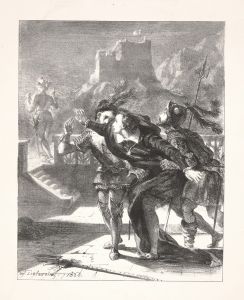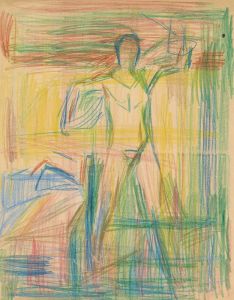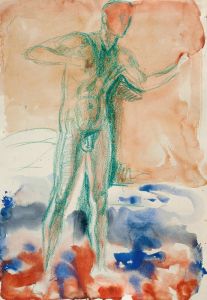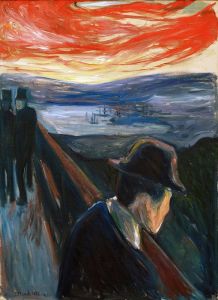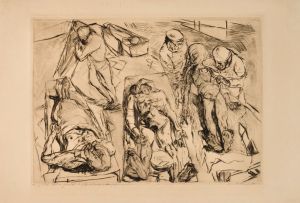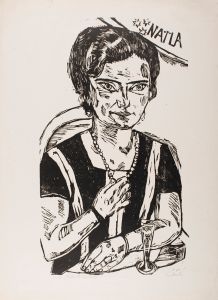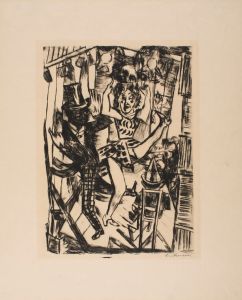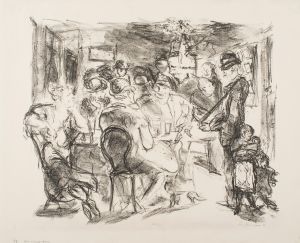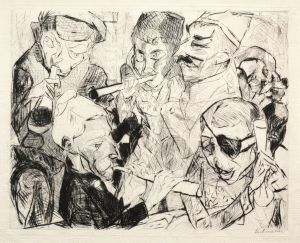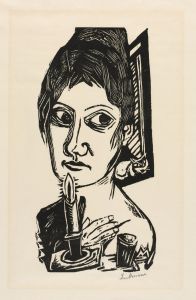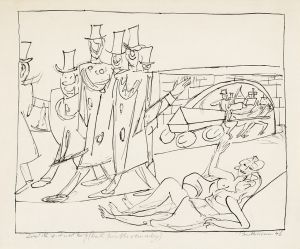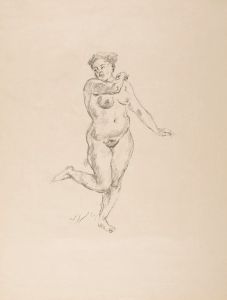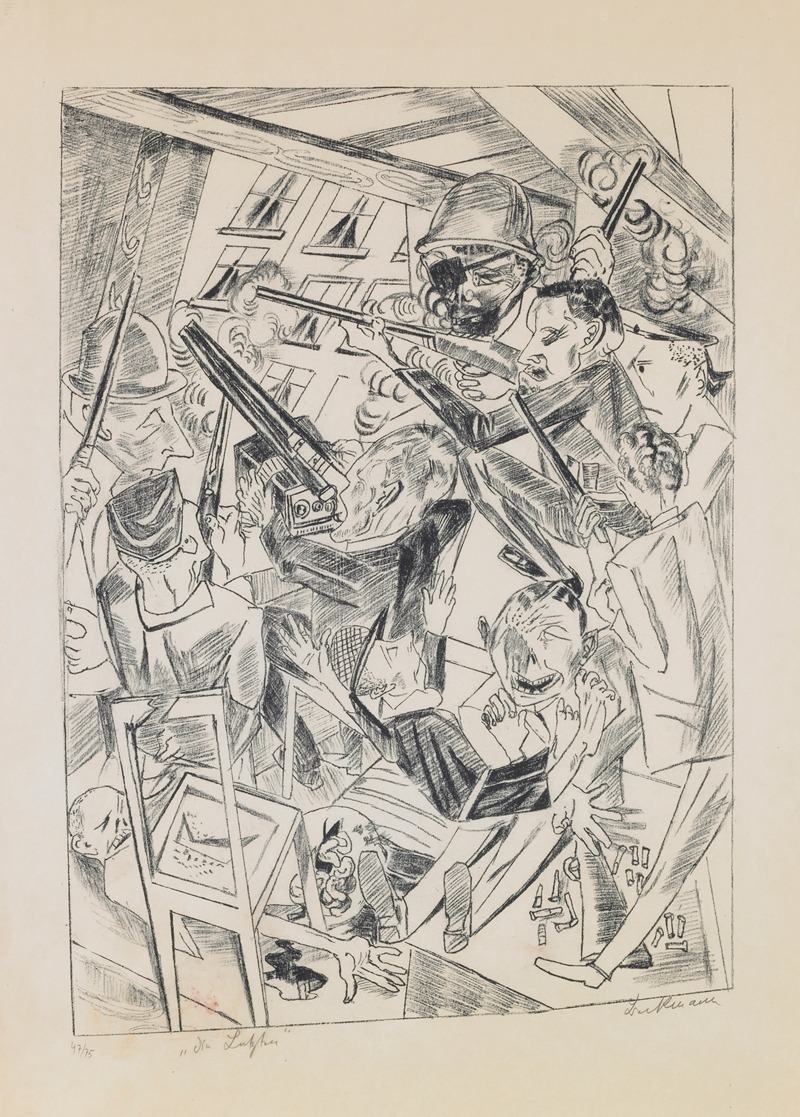
plate 10; The Last Ones
A hand-painted replica of Max Beckmann’s masterpiece plate 10; The Last Ones, meticulously crafted by professional artists to capture the true essence of the original. Each piece is created with museum-quality canvas and rare mineral pigments, carefully painted by experienced artists with delicate brushstrokes and rich, layered colors to perfectly recreate the texture of the original artwork. Unlike machine-printed reproductions, this hand-painted version brings the painting to life, infused with the artist’s emotions and skill in every stroke. Whether for personal collection or home decoration, it instantly elevates the artistic atmosphere of any space.
Max Beckmann was a prominent German painter, draftsman, printmaker, and writer, associated with the New Objectivity movement, which emerged in Germany in the aftermath of World War I. Beckmann's work is known for its expressive style and often explores themes of human suffering, existential dread, and the complexities of modern life. One of his notable works is "Plate 10; The Last Ones," which is part of a series of prints.
"Plate 10; The Last Ones" is a piece from Beckmann's series titled "Die Hölle" (The Hell), which he created between 1919 and 1922. This series consists of ten lithographs that reflect the tumultuous period in Germany following World War I, capturing the social and political upheaval of the time. Beckmann's work during this period is characterized by a stark and often brutal depiction of reality, influenced by his own experiences as a medic during the war and the subsequent societal changes.
The lithograph "The Last Ones" is a poignant example of Beckmann's ability to convey deep emotion and narrative through his art. The image typically features a group of figures, often depicted in a state of despair or resignation, which is a recurring theme in Beckmann's work. The figures are rendered with Beckmann's signature bold lines and dramatic contrasts, emphasizing the emotional intensity of the scene. The composition is often crowded, reflecting the chaos and confusion of the post-war era.
Beckmann's use of lithography in this series allowed him to reach a wider audience, as prints could be reproduced and distributed more easily than paintings. This medium also enabled him to experiment with different textures and tones, adding depth to his already complex imagery. The choice of lithography is significant, as it was a popular medium among artists of the New Objectivity movement, who sought to depict the reality of their time with clarity and precision.
"The Last Ones" and the entire "Die Hölle" series are considered important works in Beckmann's oeuvre, as they mark a transition in his artistic style and thematic focus. Moving away from the more traditional forms of expressionism, Beckmann embraced a more direct and unflinching approach to his subjects, which would define his later works. These prints not only reflect the artist's personal experiences and observations but also serve as a historical document of a society in turmoil.
Max Beckmann's "Plate 10; The Last Ones" remains a powerful testament to the artist's skill in capturing the human condition and the societal challenges of his time. Through his art, Beckmann invites viewers to confront the harsh realities of the world, encouraging reflection and empathy. His work continues to be studied and appreciated for its artistic merit and historical significance, offering insight into a pivotal moment in 20th-century history.






